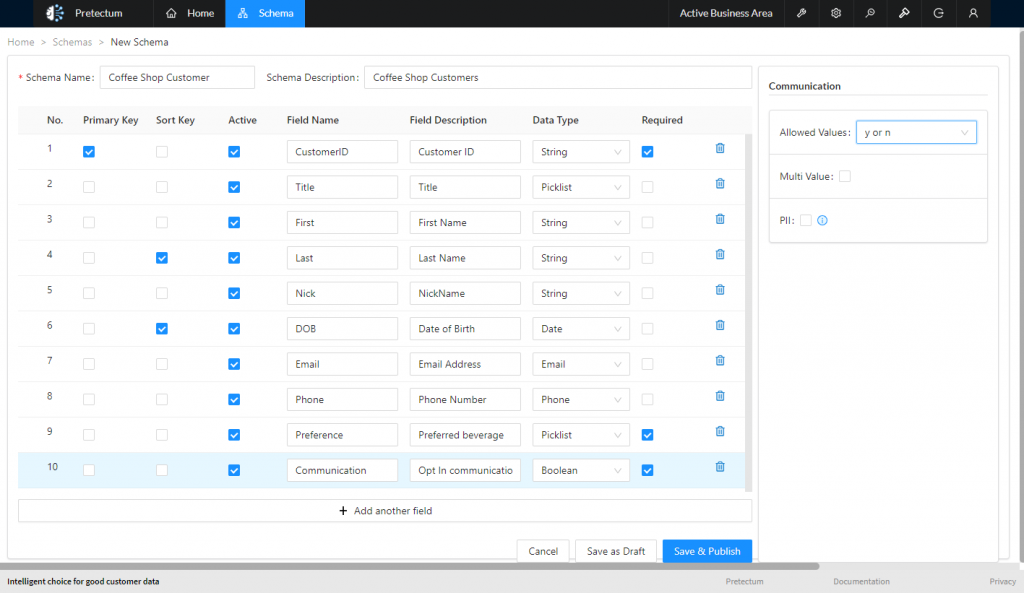Customer data, while frequently abundant, is not always reliable. in their Winter 2016 Compendium on Customer Experience: Creating Value through transforming customer journeys. McKinsey & Co. point out that a staggering 25 percent of customers will defect after just one bad experience. Bad experiences can be fomented by bad data, bad products, and bad interactions. But the one thing that costs the least to remediate, is often the data.
Just 20% of organizations publish data provenance and data lineage. Most don’t say they have no plans to start, that’s according to a 2020 O’Reilly survey. Without an understanding of where data comes from, what hope is there of improving its quality?
Annual data decay rates, may be as high as 30% across companies’ customer data each year, a figure that escalates to 70% for B2B companies. This decline in data integrity intensifies over time, posing a critical challenge for businesses aiming to provide exceptional customer experiences.
In this data turmoil, the significance of Customer Master Data Management (CMDM) systems cannot be overstated. These systems act as custodians of customer data, ensuring its accuracy, completeness, and currency. Within this realm, customer consent, self-service consumer data verification, and curation play pivotal roles. CMDM systems empower businesses to navigate the intricate landscape of customer data, addressing issues like missing or incomplete data, duplicates, inaccuracies, and expired data.
At the core of this challenge lies the concept of data quality, a term with profound implications for businesses. Data quality is not just a technical concern; it is the foundation upon which successful customer experiences are built. Dependable data forms the basis for businesses to segment and target customers for marketing, a strategy employed by two-thirds of companies. The importance of data quality initiatives can be distilled into three key pillars: data quality, data governance, and leadership support. Companies with higher data quality invariably exhibit traits such as leadership awareness of data issues, a robust governance structure, and data management being the responsibility of a cross-functional team.
Business challenges extend beyond data quality encompassing broader categories like engagement, policy and compliance, efficiency and cost, insight, revenue and growth, and managing remote employees. Addressing these challenges necessitates innovative solutions, many of which are rooted in self-service technologies, artificial intelligence (AI), and analytics.
AI, a transformative force in the digital realm, relies inherently on data.
Without reliable data, AI initiatives are rendered ineffective. However, addressing data quality issues is just the tip of the iceberg. Companies must respond to multifaceted challenges with an array of solutions, including interactive voice response systems, intelligent virtual agents, cloud-based contact centers, and advanced analytics.
Real-time guidance, a coveted capability in contemporary customer service, is made possible through the synergy of analytics and AI. However, the effectiveness of real-time guidance hinges on context, derived from linguistic triggers, acoustic cues, and application-specific triggers. Understanding and harnessing this context empowers businesses to provide personalized, timely, and relevant guidance to customers, elevating their experiences significantly.
In the pursuit of enhancing customer experiences, businesses must adopt a holistic approach. Beyond the realm of technology, strategies that prioritize customer engagement are indispensable. One such strategy is the concept of secret shopping or “mystery” shopping, where company leaders immerse themselves in the customer service process, identifying inefficiencies and refining procedures.
Secret or mystery shopping is a market research technique used by companies to evaluate and measure the quality of their products or services from the perspective of a typical customer. The process involves hiring individuals, known as mystery shoppers, to act as regular customers and assess various aspects of the business, such as customer service, product quality, cleanliness, and adherence to company policies. Consider how secret or mystery shopping typically works.
Selection of Mystery Shoppers: Companies have their pool of mystery shoppers or hire third-party agencies to recruit individuals for the task. Mystery shoppers are selected based on certain demographics and characteristics to ensure they represent the target customer base.
Assignment of Tasks: Mystery shoppers are given specific tasks or scenarios to follow during their visit or interaction with the business. These tasks could include purchasing, asking specific questions, or evaluating the overall customer experience.
Anonymity: The key element of mystery shopping is that the shoppers remain anonymous. Employees of the business being evaluated should not be aware that they are being assessed. This anonymity allows for a more authentic evaluation of the customer experience.
Evaluation and Reporting: Mystery shoppers provide detailed feedback on their experiences after completing the assigned tasks. This feedback may include observations about the cleanliness of the premises, the friendliness and efficiency of staff, the quality of products or services, and adherence to company policies. The evaluation criteria depend on the specific goals and objectives set by the hiring company.
Analysis and Improvement: The collected data is then analyzed by the hiring company to identify areas of strength and weaknesses. This information helps businesses understand the customer perspective and make improvements to enhance the overall customer experience.
Secret or mystery shopping is a valuable tool for businesses to gain insights into their operations, identify areas for improvement, and ensure that employees are delivering the desired level of service.
The concept can be used in various industries, including retail, hospitality, healthcare, and more. Additionally, the feedback from mystery shoppers can contribute to employee training and development programs to enhance customer satisfaction.
Businesses can also enhance customer experience by celebrating and commiserating with customers, following up diligently, championing their employees, fostering meaningful connections, and recognizing their customers as the heroes of their success stories.
Data remains an integral component of these customer experience enhancement strategies. Technology acts as an enabler, automating data processes that traditionally impede frontline employees.
Automated verification of customer contact information, and finding accurate accounts and contacts for marketing and sales initiatives—these are just a few examples where technology-driven data solutions streamline operations, ensuring that employees can focus on what truly matters: delivering outstanding customer experiences.
As businesses navigate the complexities of customer data management, embracing a robust CMDM system is paramount. When evaluating or operationalizing a CMDM system, businesses should consider the following actions:
Assess Your Current Data Quality: Conduct a comprehensive analysis of your existing customer data to identify inaccuracies, duplicates, and incomplete information. This assessment forms the foundation of your data quality improvement efforts.
Define Data Governance Policies: Establish clear governance policies that outline data ownership, access controls, and data stewardship responsibilities. A well-defined governance framework ensures accountability and consistency in data management practices.
Implement Consent Management: Prioritize customer consent management within your CMDM system. Ensure that you have mechanisms in place to capture, store, and update customer consent accurately. Compliance with data privacy regulations is non-negotiable.
Enable Self-Service Data Verification and Curation: Empower customers to verify and update their own data through user-friendly interfaces. Self-service options not only enhance data accuracy but also contribute to a positive customer experience.
Focus on Data Quality Metrics: Define key performance indicators (KPIs) related to data quality, such as accuracy rates, completeness levels, and duplicate identification rates. Regularly monitor these metrics to gauge the effectiveness of your CMDM system.
Leverage Advanced Analytics and AI: Explore advanced analytics and AI-driven tools within your CMDM system. These technologies can automate data profiling, standardization, and enrichment processes, significantly improving the efficiency of your data management efforts.
Foster Cross-Functional Collaboration: Encourage collaboration between IT, marketing, sales, and customer support teams. Cross-functional collaboration ensures that data management efforts align with business objectives and customer experience goals.
Invest in Continuous Training: Provide ongoing training to employees involved in data management activities. Keeping staff updated with the latest industry trends and best practices is essential for maintaining high data quality standards.
Regularly Update Customer Preferences and Tastes: Customer preferences and tastes are dynamic. Implement mechanisms to capture and update this information regularly. Personalized experiences are contingent on an accurate understanding of customer preferences.
Promote a Culture of Data Quality: Instill a culture within your organization where every employee recognizes the value of data quality. Promote awareness campaigns, training sessions, and recognition programs to reinforce the importance of accurate customer data.
An era of exceptional customer experiences is intrinsically linked to the quality of customer data. Businesses that invest in robust CMDM systems, coupled with advanced analytics and AI-driven solutions, gain a competitive edge by delivering personalized, timely, and meaningful interactions.
By taking proactive measures to enhance data quality, establish robust governance frameworks, and leverage cutting-edge technologies, businesses can not only mitigate data challenges but also transform these challenges into opportunities for superior customer engagement and long-term loyalty. Embrace the power of reliable customer data, and in doing so, elevate your customer experiences to unparalleled heights.





